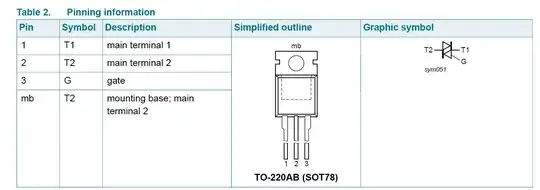R85 in the following circuit keeps getting burned out when the photo-triac is turned on. It may last for a few minutes before burning out. It is a smallish 1/10 W resistor, while R83 is in DIP package.
I am confused about what's causing R85 to exceed its power rating. AC_HOT is 220 VAC. The load is an inductive load (an incline motor, rated at 15W).
Is there anything in the following circuit that does not make sense? Any pointers are appreciated.

